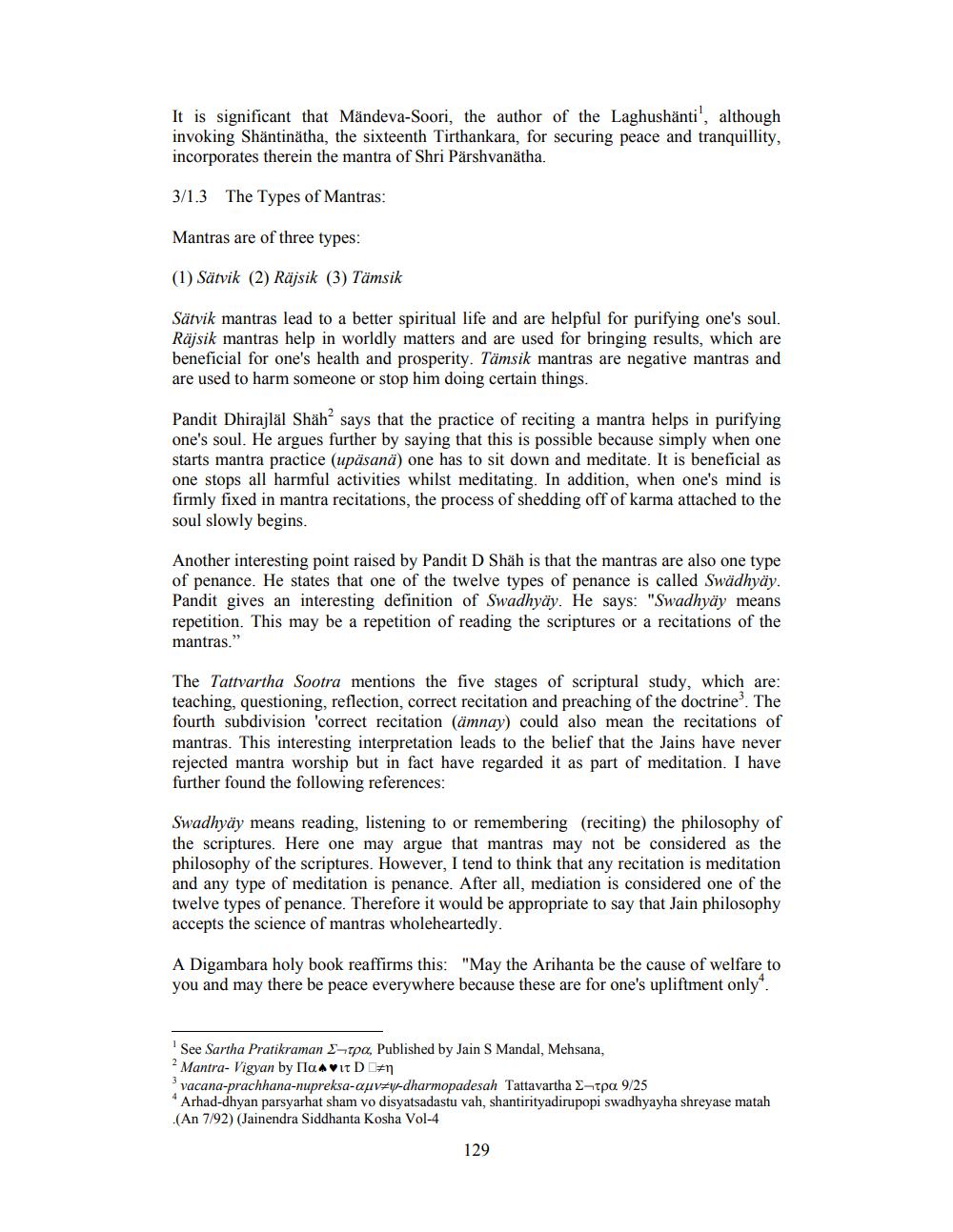________________
It is significant that Mändeva-Soori, the author of the Laghushänti', although invoking Shäntinätha, the sixteenth Tirthankara, for securing peace and tranquillity, incorporates therein the mantra of Shri Pärshvanätha.
3/1.3
The Types of Mantras:
Mantras are of three types:
(1) Sätvik (2) Räjsik (3) Tämsik
Sätvik mantras lead to a better spiritual life and are helpful for purifying one's soul. Räsik mantras help in worldly matters and are used for bringing results, which are beneficial for one's health and prosperity. Tämsik mantras are negative mantras and are used to harm someone or stop him doing certain things.
Pandit Dhirajläl Shäh' says that the practice of reciting a mantra helps in purifying one's soul. He argues further by saying that this is possible because simply when one starts mantra practice (upäsanä) one has to sit down and meditate. It is beneficial as one stops all harmful activities whilst meditating. In addition, when one's mind is firmly fixed in mantra recitations, the process of shedding off of karma attached to the soul slowly begins.
Another interesting point raised by Pandit D Shah is that the mantras are also one type of penance. He states that one of the twelve types of penance is called Swädhyäy. Pandit gives an interesting definition of Swadhyay. He says: "Swadhyay means repetition. This may be a repetition of reading the scriptures or a recitations of the mantras."
The Tattvartha Sootra mentions the five stages of scriptural study, which are: teaching, questioning, reflection, correct recitation and preaching of the doctrine. The fourth subdivision 'correct recitation (ämnay) could also mean the recitations of mantras. This interesting interpretation leads to the belief that the Jains have never rejected mantra worship but in fact have regarded it as part of meditation. I have further found the following references:
Swadhyäy means reading, listening to or remembering (reciting) the philosophy of the scriptures. Here one may argue that mantras may not be considered as the philosophy of the scriptures. However, I tend to think that any recitation is meditation and any type of meditation is penance. After all, mediation is considered one of the twelve types of penance. Therefore it would be appropriate to say that Jain philosophy accepts the science of mantras wholeheartedly.
A Digambara holy book reaffirms this: "May the Arihanta be the cause of welfare to you and may there be peace everywhere because these are for one's upliftment only.
See Sartha Pratikraman E-tpa, Published by Jain S Mandal, Mehsana, 2 Mantra- Vigyan by ICAVIT D #n
vacana-prachhana-nupreksa-auvzy-dharmopadesah Tattavartha 2-tpa 9/25 *Arhad-dhyan parsyarhat sham vo disyatsadastu vah, shantirityadirupopi swadhyayha shreyase matah (An 7/92) (Jainendra Siddhanta Kosha Vol-4
129




